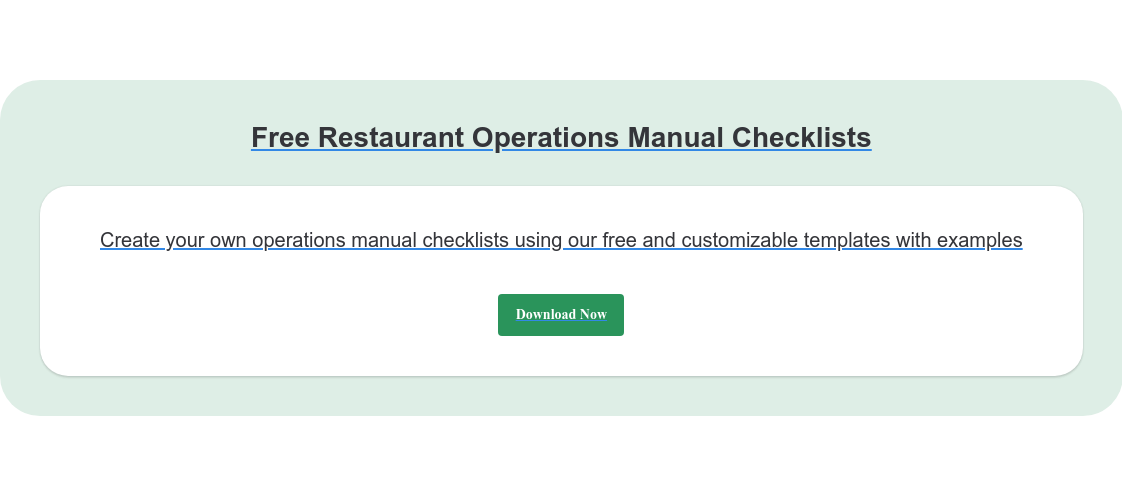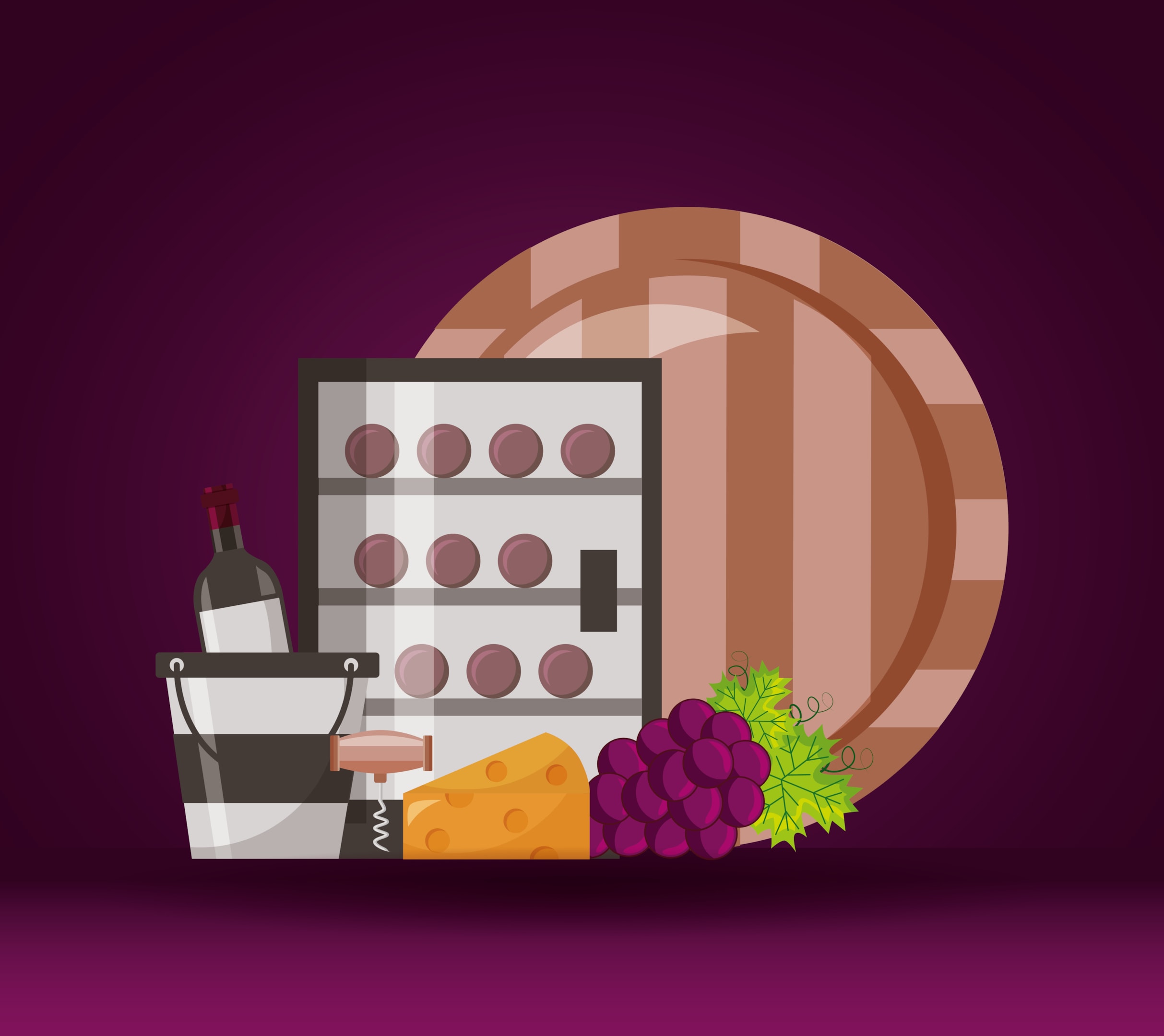Independent full-service restaurants may not have the advertising budget of large QSR chains. But the one thing they should have in common with them is the operations manual.
Key Takeaways
- A restaurant operations manual should explain why tasks should be performed, not just a checklist.
- Always include a detailed explanation of procedures in the manual.
- Employee and guest safety should always be included in the restaurant manual.
- Continual staff training on the operations manual is part of a successful roll out.
An operations manual contains the processes and procedures for every single aspect of your restaurant. It may not be the most exciting book you'll ever write or read, but it's a crucial reference if you want to provide consistent quality over time. And it's even more important if you plan to expand operations beyond a couple of units.
For example, an operations manual will make sure that the front-of-house staff always cleans tables and chairs in the same way, regardless of who is performing the task. Or that the signature dish your customers love and come back for, will taste the same every time, even if there’s a new chef in the kitchen.
The problem with operations manuals is that their essence is in the details. That can require a lot of painstaking work, forcing you to think about how you want to run your restaurant and why in that way and not a different one.
Fear not though: in this post we’re going to help you make the task less daunting.
Let’s start by saying what an operations manual is not.
It’s not a collection of checklists. Although checklists are an essential part of it, they won’t explain why tasks should be performed as described.
It’s not a copy of another manual. A restaurant’s procedures derive directly from its concept and culture. If you think you can simply use those of another restaurant, it would mean your concept would also be the same. Other operations manuals can be used as a reference (especially if you’ve never written one before), but will have to be adapted to your own circumstances.
The best time to write it is before the grand opening, right after you have clarified the concept. But if you are already operating a restaurant without one, it’s not too late to write it.

You can do that internally or hire a consultant. Whatever the case, make sure to involve your staff in the process. If employees get to bring their ideas to the table, they will be much more inclined to follow it. Also, remember that the manual is a living document that should be revised and updated as your procedures improve and evolve.
Restaurant operations manual overview
Although there is no standard format for an operations manual, it should at least cover the following areas:
- Restaurant concept
- Human resources
- Guest service
- Food preparation and sourcing
- Food safety
- Maintenance and cleaning of areas
- Maintenance and cleaning of equipment
- Employee and customer safety
These are just the basics. There are other aspects that could be included, such as hiring, training, marketing, record keeping and accounting, which can be produced as separate handbooks.
Each section should include:
1. An introduction with the WHY. You should be clear about why it’s important to have high standards within that particular aspect, even when it sounds obvious. If employees know why they're executing tasks in a certain way, they're more likely to comply. Feel free to include statistics and quote studies or trends if you think they can build a stronger case.
2. Detailed procedures. The difference between an operations manual that works and one that collects dust on a shelf is in its details. How many should you include? As many as you need to make your service stand out and fulfil your concept. For example, simply adding “clean tables after customers have left” to a checklist may not be enough. You may want to describe the exact steps and what products to use.
3. Checklists. There can be checklists for practically anything. They are particularly useful when important details might be overlooked.
Let’s look at each section in detail.
The concept
This is the manual's introduction, where you explain your restaurant's concept and the type of experience you want to provide to guests. Make it short but use precise language. Simply saying that you want to provide a “great experience” won’t work, you’ll have to spell out what that means to you. Everything that follows will be consistent with it.
Human resources
This section will list every job position at the restaurant, explaining what is expected from them. Here you should include not only the tasks each one will be responsible for but also things like:
- Appearance and grooming
- How do you want employees to treat each other
- What behaviors won’t be tolerated
- What behaviors are encouraged
- How to give feedback
Guest service
Before going into the details of customer service, you will want to stress the type of dining experience you want to provide and the importance of outstanding service. You could also quote this 2017 study by the University of Denver, which found that customer’s willingness to pay was more influenced by restaurant ambiance and service than by the quality of the food, especially in fine-dining restaurants.
The part about procedures will describe what front-of-house staff are expected to do at each step of the cycle of service, such as:
- Taking reservations
- Welcoming guests
- Assigning tables
- Late arrival and no-show policies
- Taking orders
- Upselling
- Serving food
- Assisting guests while they’re eating
- Presenting the bill
- Handling complaints
Each of these steps will include details such as verbiage to use, when to make eye contact, distance to maintain, special attention to senior citizens, children, etc.
Another part of this section will include non-customer-facing procedures that are also essential for operating the front of house efficiently, such as:
- Waitlist management
- Cash handling
- Tipping policy
- Managing off-premise orders
- Shift management
- Capacity and table management
- Communication between FOH and BOH during service
Watch: How to manage restaurant capacity with Eat App.
Food preparation and sourcing
This section describes how to prepare and serve each dish on the menu. Although it’s mainly for kitchen staff, it’s a useful reference for the front of house too, as servers need to be ready to answer customers’ questions.
Having detailed step-by-step instructions will make sure your dishes always have the taste your customers know and expect no matter who cooks them. It will also keep food costs under control. The price of each menu item also depends on the cost of its ingredients, so kitchen staff need to know the exact quantities and portion size of each one of them.
Sourcing ingredients from the same purveyors will also be important to keep consistency, so make sure to include their contact details.
Related content: How to calculate food costs efficiently
Food safety
This is possibly the most important section of the manual. Here, you should first of all explain:
- How food becomes contaminated
- The safe and dangerous temperature ranges
- The most frequent foodborne illnesses, symptoms, and consequences
- What food becomes contaminated more easily
- What to do in case of foodborne contamination
You could also quote official data about foodborne outbreaks in the restaurant industry, to stress the importance of having solid preventative measures.
Detailed procedures will include:
- Hand and personal hygiene
- Handling and storing food
- Keeping track of food’s temperature and expiration dates
- Testing food quality
Maintenance and cleaning of areas
The introduction to this section will explain why presenting a clean restaurant is important for both customers and staff, and describe what cleanliness standards are expected.
There are many things to clean in a restaurant. To keep this section clear, it’s best to separate back and front of house, and break each of them into sub areas. For example: for the back of house these could be food cooking and preparation, food storage, food delivery, staff restrooms and other common areas; for the front of house, these could be bar, outdoor dining space, entrance, customers restrooms, etc.
From here, make a list all items that will have to be cleaned, how to clean them, and how often. You may want to be even more granular and list parts of these items too. For example, tables could be broken down into tops and legs, to make sure the latter too are cleaned and wiped regularly.
We recommend excluding equipment and tools and create a separate section for them.
The other aspect to consider is functionality. Not only should restrooms be cleaned and sanitized several times a day, handsoap and tissues should always be available to customers.
Maintenance and cleaning of equipment
Without equipment, a restaurant wouldn’t be able to function. It’s therefore important that it’s properly cleaned and regularly maintained.
Here too, the practical thing is to divide between back and front of house and list all equipment and devices. The three aspects to consider are installation, cleaning and maintenance. The main source will be the manufacturer’s manual.
Employee and customer safety
This section should start by stating the commitment of the restaurant to its customers and employees. It will then list:
- Handling and storage of chemical products
- Fire evacuation procedures
- Personal and protective equipment of employees
- What to do if a customer or a colleague feels ill
- What to do if pests are found in the restaurant
- Emergency numbers
The main source for this section will be official regulations.















-1.png?width=1812&height=1072&name=TripAdvisor%20%26%20More%20Bookings%20(1)-1.png)
-2.png?width=1812&height=1072&name=Google%20Bookings%20(1)-2.png)


-1.png?width=200&name=TripAdvisor%20%26%20More%20Bookings%20(1)-1.png)
-2.png?width=200&name=Google%20Bookings%20(1)-2.png)
-1.png?width=200&name=Instagram%20Bookings%20(1)-1.png)
-1-png.webp?width=200&name=Facebook%20Integration%20Rectangle%20(1)-1-png.webp)







.webp?width=200&name=download%20(1).webp)
%20(1)-2.webp?width=200&name=Eat%20(34)%20(1)-2.webp)
%20(1)-2.webp?width=200&name=Eat%20(18)%20(1)-2.webp)









%20(1)-1.webp?width=314&height=175&name=Eat%20(62)%20(1)-1.webp)


.webp?width=144&height=72&name=Eat%20App%20Logo%20(3).webp)